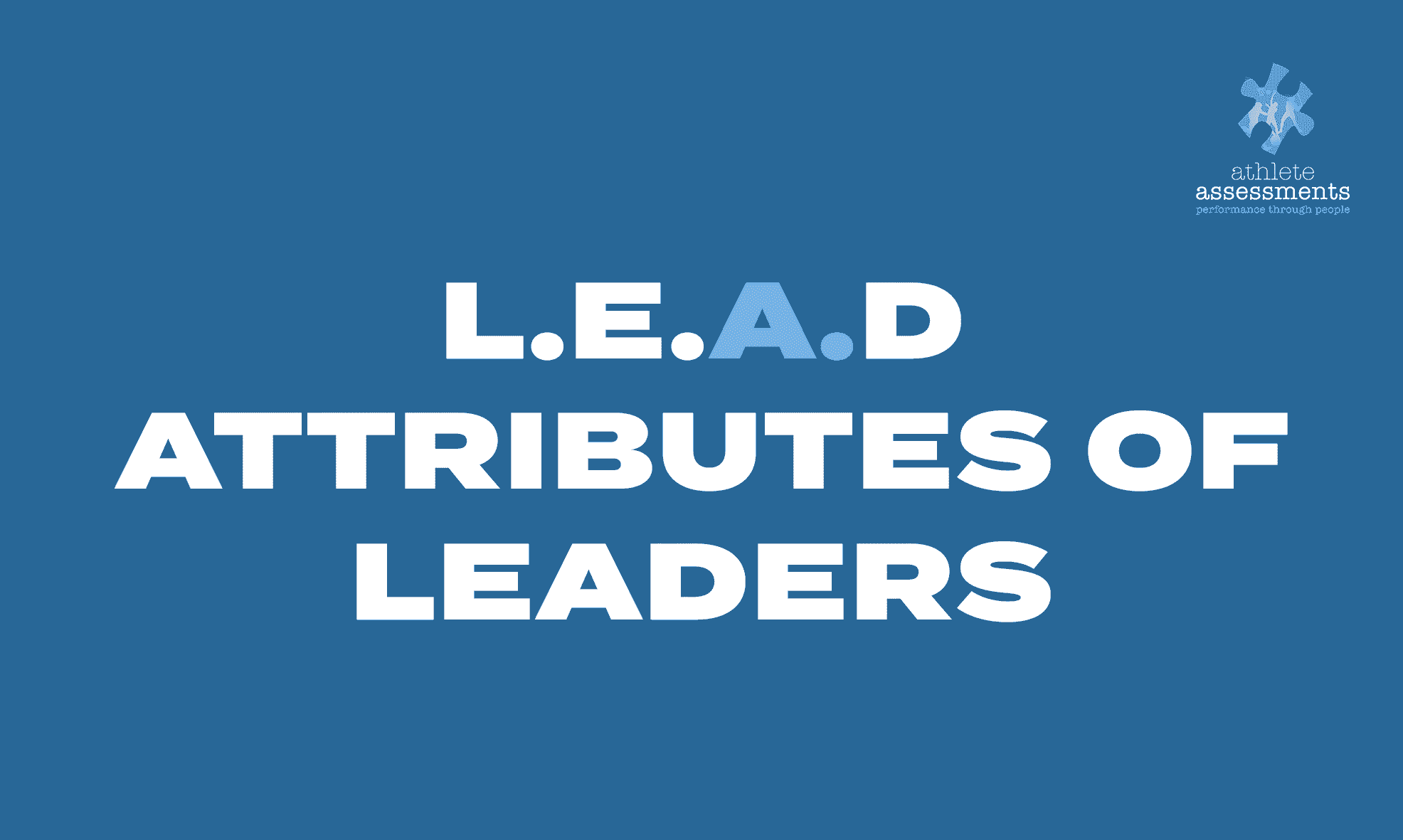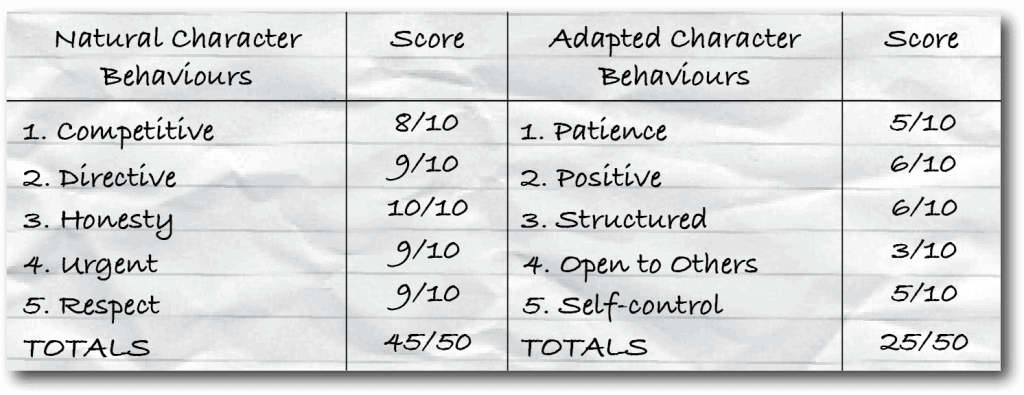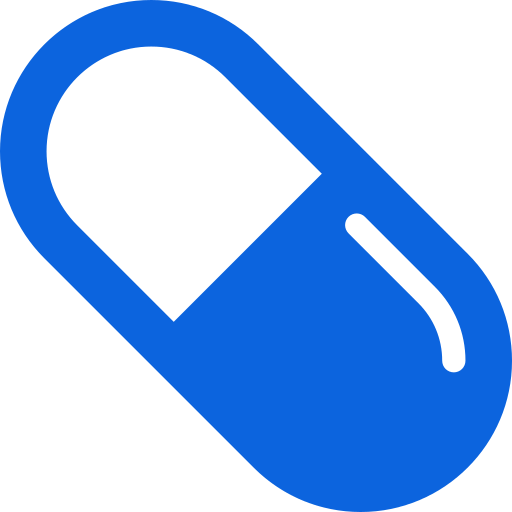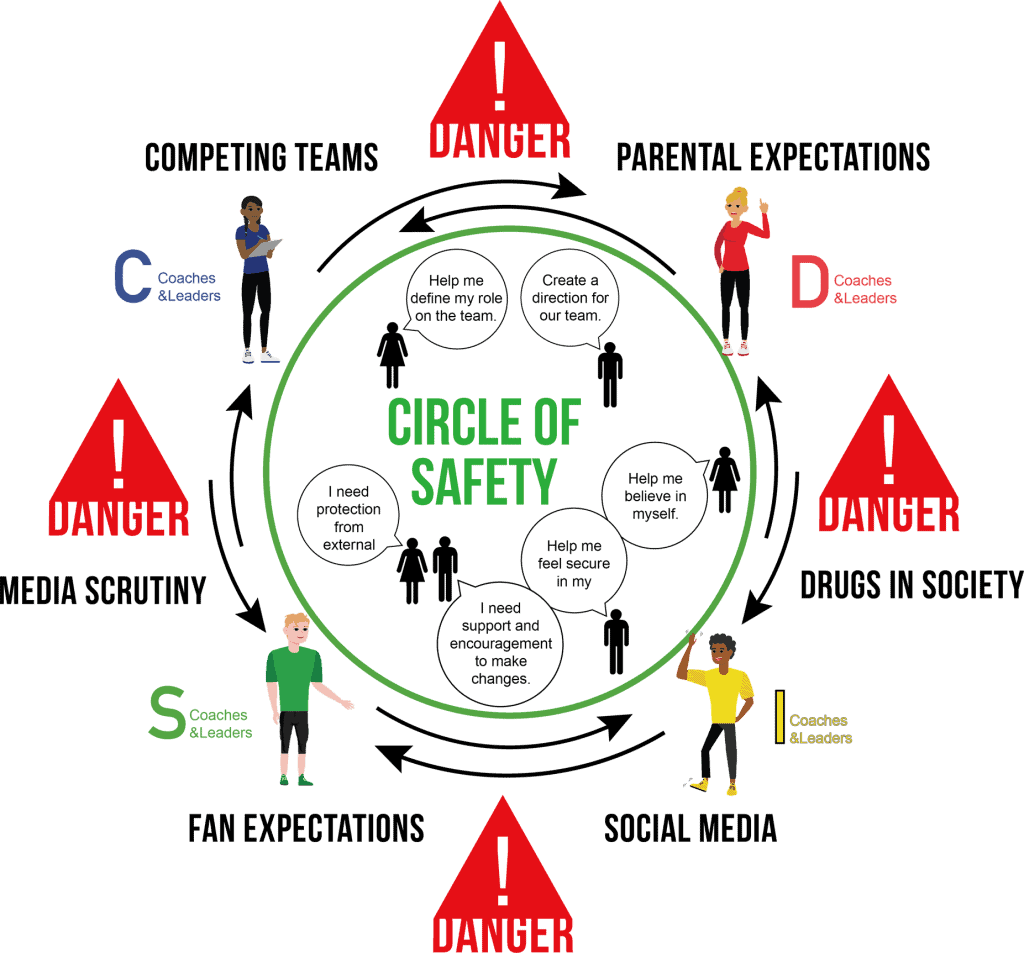A: Attributes of Leaders
Defining What and How Leaders Inspire Results
Effective leadership is defined by actions and behaviors rather than solely by personality traits.
While a leader’s character influences their actions, it’s their observable behaviors that leave the strongest impression and determine their impact. We judge leaders by what they do—their decisions, interactions, and results—because behaviors are visible and measurable. DISC helps by focusing on these observable behaviors, making it a practical tool for understanding and developing leadership skills.
Key Leadership Behaviors Include...
The list of behaviors goes on. What would you add?
Watch the video below to learn more about attributes of leaders:

Building leadership Character through behavior
Being a leader is a 24/7 role—leaders are always in the spotlight, with their character revealed through their behaviors and how others perceive them. While no leader is perfect, their actions are constantly observed, especially in today’s hyper-connected world. History offers both poor examples to learn from and inspiring ones to emulate.
This section of your workbook focuses on understanding the behaviors that shape your Leadership Character. Drawing from Jim Loehr’s The Only Way to Win (a highly recommended read), we explore two types of character:
- Performance Character: Skills and behaviors that drive results.
- Personal Character: The deeper qualities that define you as a leader and set you apart.
Through descriptions and reflective activities, you will identify and develop both aspects of your character. This process will guide your growth as a leader and help you become someone your team and college are proud to follow.
Personal & Performance Characteristics
While having strong Performance characteristics can drive results, neglecting Personal characteristics can lead to unsustainable success that may harm relationships and the broader environment. Research emphasizes that Personal characteristics form the foundation for developing sustainable performance. Building strong Personal traits supports and enhances Performance traits, leading to well-rounded leadership.
Behavior as a Path to Growth
Leadership character is expressed through behavior, which is adaptable and measurable. By focusing on your actions, you can develop your character and improve both personal and team outcomes. Tools like Athlete Assessments’ DISC Profiles help identify strengths and weaknesses, emphasizing that even a strength, when overused, can become a liability.
To guide this development, exercises like the Character Scorecard encourage leaders to reflect on their behaviors and ensure their strengths are used to enhance both personal and team success.
Character Scorecard
The Character Scorecard helps leaders identify their strengths (Natural Character Behaviors) and limitations (Adapted Character Behaviors) based on their DISC Profile. Leaders focus on five strengths and five areas for development, using their DISC Report to pinpoint these behaviors.
Each week, leaders rate their performance in these areas on a scale of 1 to 10. A low score indicates an area for improvement, and the goal is to develop your ‘character muscle’—the ability to consistently apply effective behaviors, especially under pressure. Like physical muscles, your character traits need regular practice and attention to grow stronger.
The Character Scorecard is aligned with the Situation x Behavior = Results model, where each situation is an opportunity to apply the right behavior. By regularly reviewing your scorecard, you evaluate how your behavior choices are impacting your results.Leaders should balance Performance Characteristics (e.g., confidence, focus, mental toughness) with Personal Characteristics (e.g., integrity, respect, compassion). While Performance traits are crucial for results, Personal traits provide the foundation for sustainable success. Regular reflection and self-assessment help leaders strengthen both areas, leading to more effective leadership.
Below is an example scorecard from Bo’s leadership role at the 2004 Olympics. Refer to pages 106-109 to complete your own scorecard.

developing attributes of leaders
We discussed developing our ‘Character Muscle’—the ability to strengthen and improve key leadership behaviors. But how do we go about this? Essentially, you have two choices:

Take Ownership
Lead your own growth by taking responsibility and growing through your actions.

Rely on Others to Push You
Let others guide your actions, lacking the ownership and accountability of self-driven growth.
We encourage you to choose option one—take ownership of your development. Use your coaches, managers, and mentors as guides, but drive the process yourself. By doing so, you will unlock true growth and become a leader capable of making lasting, meaningful changes.
Here are 7 methods to use to help you address your Leadership Character limitations and form a plan, which can be written down in your workbook.
THE CIRCLE OF SAFETY
Watch the video below to learn more about the circle of safety.
As a leader, understanding psychological models like the Circle of Safety is essential. Rooted in Maslow’s Hierarchy of Needs, this model shows that after meeting basic needs like food and shelter, our next priority is safety. Without feeling safe, people focus on survival rather than performance. A leader’s role is to create a safe environment where team members can thrive without fear of physical, psychological, or emotional threats.
Within the Circle of Safety, risks like harsh criticism, bullying, or performance anxiety can arise. It’s important to recognize and address these dangers, whether by resolving conflicts, teaching new skills, or fostering a positive culture.
Using DISC helps leaders understand individual behaviors, ensuring a supportive environment where team members can perform at their best. By promoting safety and self-awareness, leaders can empower their teams to thrive and reach their full potential.


